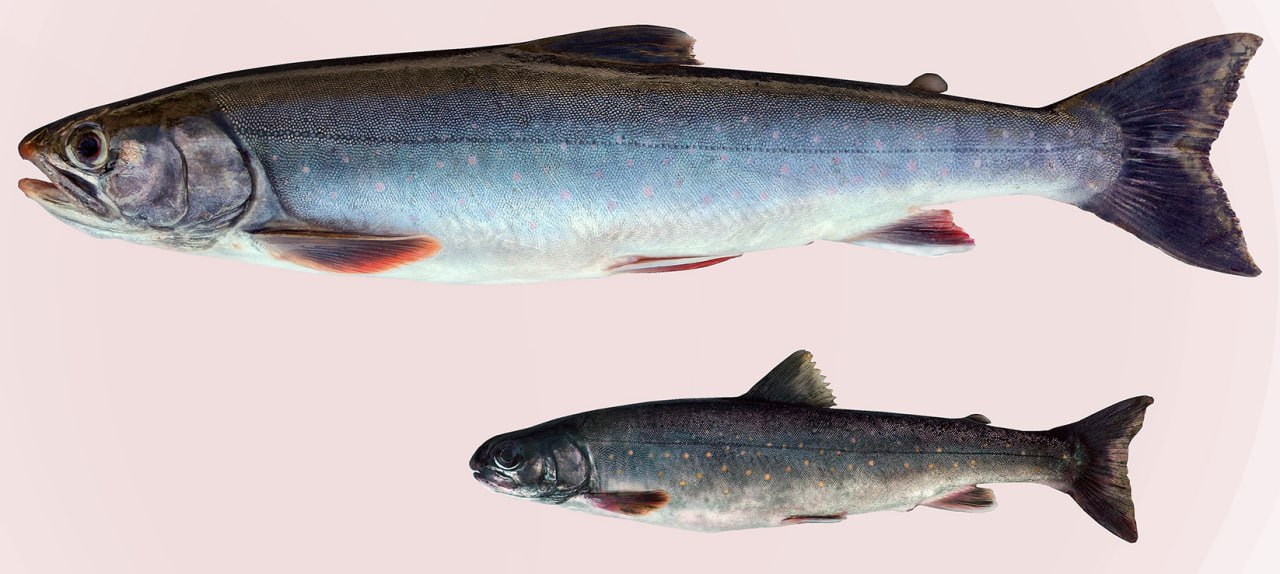
The Kamchatka Volcanoes Nature Park Network, in collaboration with scientists from Vitus Bering KamSU and the Institute of Ecology and Evolution of the Russian Academy of Sciences, has begun implementing the first phase of the Presidential Fund for Nature project, "Search, Description, and Development of a Strategy for the Rational Use of Endemic Fish Species from Unexplored Lakes of the Bystrinsky Nature Park."
Most of the Bystrinsky Nature Park's water bodies are known to be home to specific salmonids. Understanding their diversity, evolutionary history, population status, and potential risks required specialized scientific research.
The first object of study was a cascade of lava-dammed lakes at the foot of Ichinsky Volcano.
"The eruption of the volcano's lateral cone 7,500 years ago dammed the river valley with lava. This resulted in the formation of the Ketachan-Arbunat-Angre chain of lakes. The most interesting from a hydrobiological perspective is Lower Angre Lake. This body of water was populated by char through a channel from an ancient glacial lake located higher up the slope," explained project leader Evgeny Esin, Doctor of Biological Sciences.
It was in Lake Angre, where the char arrived through a channel from a glacial lake, that nature created its own unique laboratory! Slow water filtration through lava dams and seasonal flooding create favorable conditions for plankton development—the biomass of planktonic crustaceans here is many times higher than in similar lakes in Kamchatka.
The char have learned to take advantage of this abundance. Scientists have discovered that an entirely new form has evolved from the familiar form, which feeds on bottom-dwelling invertebrates and spawns in a tributary! It has transitioned entirely to life in the water column and feeds on abundant zooplankton. The difference in food sources has led to divergent maturation and spawning times for the char.
"The uniqueness of the speciation event in Lake Angre lies in the tiny size of the ecosystem, covering only 0.2 square kilometers. It is the smallest body of water known to science where vertebrate speciation occurred without geographic barriers," emphasized Acting Rector Olga Rebkovets.
Specialists will study endemic fish species inhabiting 11 mountain lakes in the park. This will allow them to understand the diversity and evolutionary history of local fauna. This information is important for developing a strategy for the long-term conservation of ecosystems, especially in the face of increasing anthropogenic impact.
The results of the study will be summarized by the end of 2026. A detailed report on the work will be submitted to the Kamchatka Volcanoes Nature Park Network, ensuring a sustainable future for these unique lakes and their inhabitants.
The project is being implemented with co-financing from the Interdepartmental Comprehensive Program for Scientific Research of the Kamchatka Peninsula and Adjacent Waters in 2024-2026.
Related materials:
Pravda: "Kolyma Holds the Secret of Ancient Seas: Geneticists Decipher the History of Arctic Fish"
Kamchatka Volcanoes: "How Lava Flows Created Lakes, and Tundra Created Hummocks"
